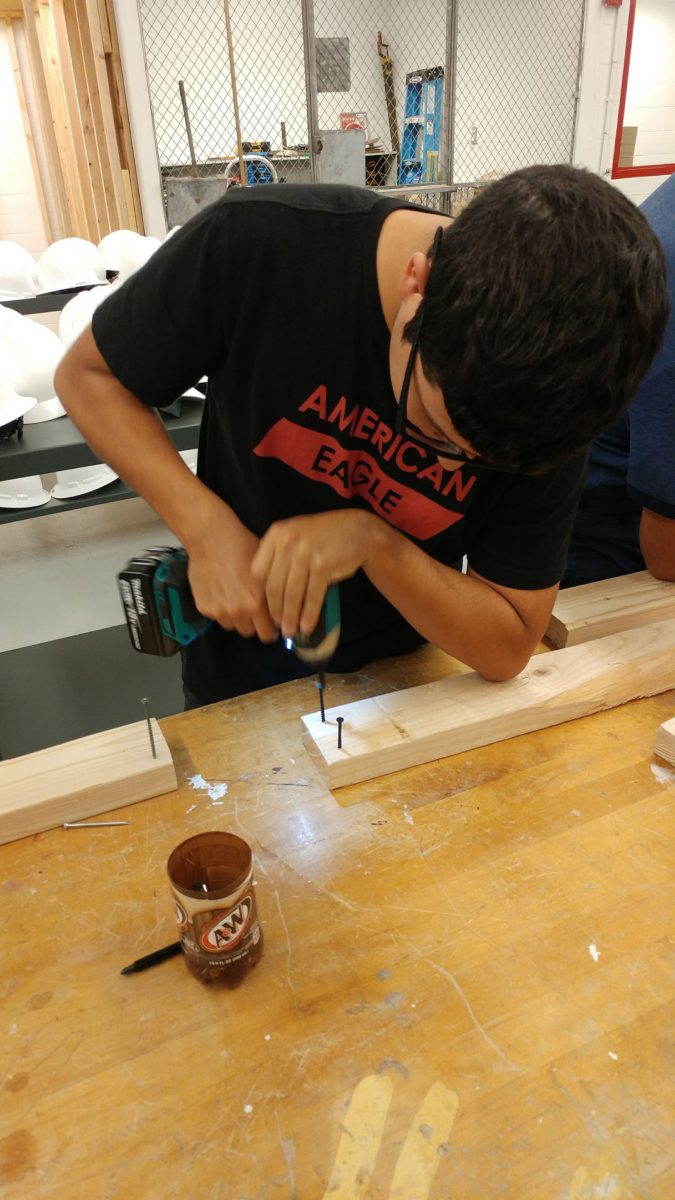HARLINGEN — The fresh pine frames sat around the large shop, waiting for students to flesh them out with switches, outlets, wiring and fuse boxes.
The frames, called “rough-ins,” are being used to teach high school students how to turn houses into homes where families can create memories.
“It teaches you quite a bit,” said Daniel Rivera, 16, one of the new students in the class taught by Tim Soto, who spoke with great enthusiasm about the class.
“Right now it’s safety,” he said. “I’m making sure they’re learning how to use power drills, how to use hammers, protective equipment.”
The class is currently called building maintenance but will soon be billed as electrical 1 and 2.
The new electrical curriculum is one of several new courses offered by the Harlingen school district as part of a redesign of its Career and Technical Education Department. Several classrooms in the vocational building at Harlingen High School were refurbished this summer to make room for autobody classes, an automotive lab and a welding curriculum.
Electrical training is also part of that new training.
Soto spoke of one student who already has extensive knowledge in automotive training and is now learning electricity to augment his abilities. Things are going well and the year has just started.
“We just started two or three weeks ago,” he said excitedly.
Every student is different. For example, Eric Garza is the only senior studying electricity.
“This is my first experience with electricity,” said Eric, 18. “My father flips houses and I want to help him with the electricity instead of him going out.”
I. Overview:
In the HCISD’s new Electrical Technology courses, students will gain extensive knowledge and hands-on skills needed to either:
1. Enter the workforce as an entry-level electrician
2. Prepare for a postsecondary degree in a specified field of electrical technology or construction management
or 3. Pursue an approved apprenticeship program
II. Basic Tools
from their tool kit:
ammeter
ohmmeter
volt-ohm-multimeter
continuity tester,
voltage tester
pipe benders
III. Learned Skills:
• Students will learn conduit bending and installation and the applications of conductors and wiring techniques used in residential construction maintenance
• Students will l earn electrical concepts used in Ohm’s law applied to direct current and series circuits and understand series parallel circuits, resistive circuits, Kirchhoff’s voltage and current laws, and circuit analysis
• Students will learn to use the National Electrical Code and National Electrical Manufacturers Association classifications
• Students will learn the types and applications of raceways, wireways, and ducts
• Students will learn how to identify and use electrical symbols in design drawings, schematics, and wiring diagrams
• Student will possess knowledge of alternating current and direct current motors with specific attention being given to main parts, circuits, and connections.
IV: Taught Safety
Procedures:
• Students will understand Occupational Safety and Health Administration (OSHA) and how it promotes safety on the job;
• Students will be able to identify electrical hazards and how to avoid or minimize them in the workplace;
• Students will possess the safety knowledge of electrical lockout and tagout procedures, personal protection using assured grounding and isolation programs, confined space entry, respiratory protection, and fall protection.
Industry Certifications
Earned
• NCCER Basic Core Certification
• NCCER Electrical Certification Level I




